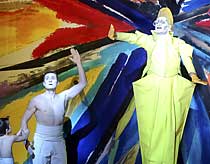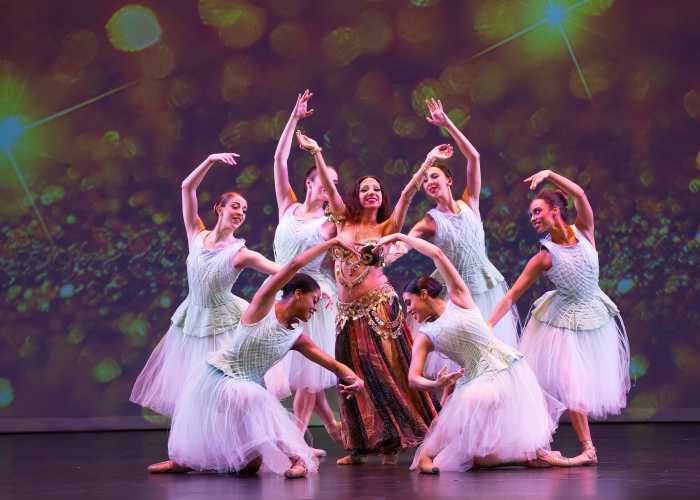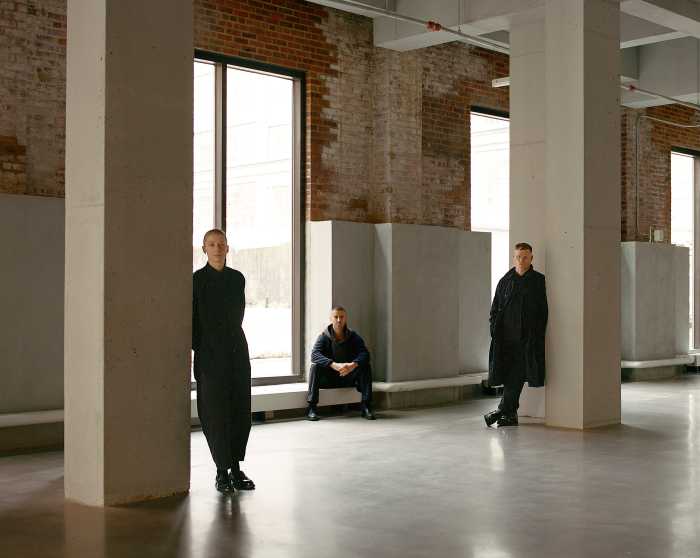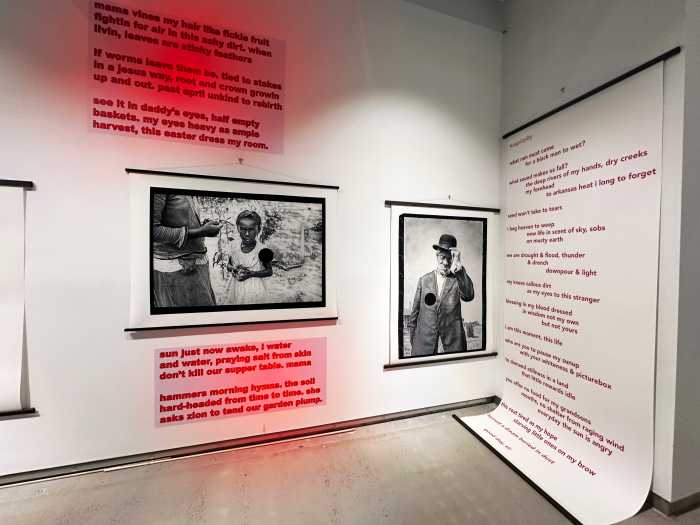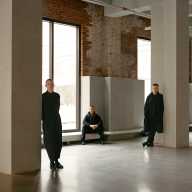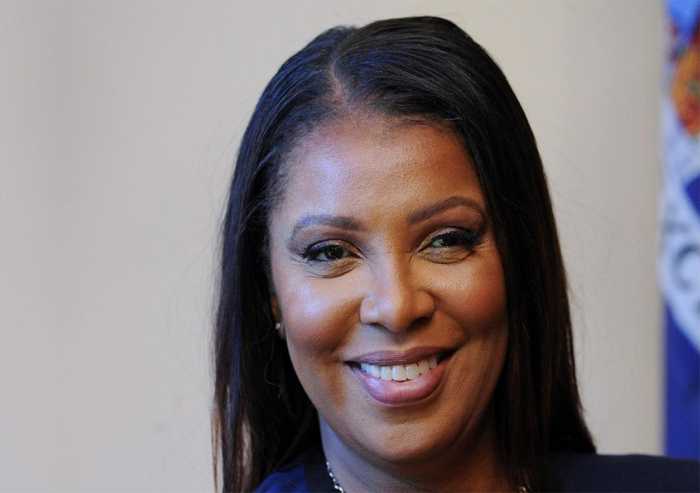Betty Nansen Theatre’s production of "Woyzeck,"
now at the Brooklyn Academy of Music’s Harvey Theater, is not
the first time Georg Buchner’s seminal play has been set to music.
In 1924, Alban Berg created a furor with his misspelled "Wozzeck,"
an opera written in the atonal style of Berg’s teacher, Arnold
Schoenberg. Hailed for its poignant, inspired music and brilliant
orchestration, "Wozzeck" has become one of the landmarks
of operatic history.
Although it’s unlikely this new production – with music and lyrics
by the husband-wife team of acclaimed singer-songwriter Tom Waits
and Kathleen Brennan, and with direction, design and visual concept
by Robert Wilson – will have as great an impact, it certainly
will be a highlight of BAM’s 20th Next Wave Festival, and, hopefully,
like the opera, will be an inspiration to musicians and dramatists
in the years to come.
Written in 1837, "Woyzeck," with its quick succession
of short scenes and abstract treatment of human suffering, has
been seen as a forerunner of Expressionism, most notably in the
early work of Bucher’s fellow-German, Bertolt Brecht.
The play tells the tragic story of Woyzeck (Jens Jorn Spottag),
an orderly in the army who is so desperate for money that he
sells his body to a doctor (Marianne Mortensen) for scientific
experimentation so that he can support his beloved Marie and
their young son.
Chastised by his captain (Ole Thestrup) because he has a child
born out of wedlock, treated like a soulless animal by the callous
doctor and finally, betrayed by Marie (the Marlene Dietrich sound-alike
Kaya Bruel), who has an affair with the drum major (Tom Jensen),
he descends into madness.
"Woyzeck" is based on the true story of a barber who
stabbed his mistress in a fit of jealousy and was sentenced to
death in 1821. But in Buchner’s hands, Woyzeck is not so much
a tortured soul who becomes a victim of his own passions as someone
who is at the mercy of a society that allows a man to be tortured
by his fellow man. In this sense, the play anticipates modern
theater, not only in its expressionism, but also in its naturalism,
expressed by the portrayal of a working-class hero who is destroyed
by poverty and degradation.
Because Buchner was still working on the play when he died at
age 23, there is no definitive version of the play. Thus, it
is a gold mine for directors who would like to put their own
imprint on the work.
Wilson, who has studied and worked with painters, architects
and choreographers, is not only the director, but also the set
and lighting designer of "Woyzeck." With costume designer
Jacques Reynaud, he has created a harsh, glaring world of stark,
abstract forms and garish costumes.
This is the third time Wilson has collaborated with Waits and
Brennan. The last time they worked together was on the 1995 Next
Wave musical-theater work, "Alice." Previously, they
joined forces with author William S. Burroughs in "The Black
Rider," presented at the 1993 Next Wave Festival.
The music and lyrics by Waits and Brennan are wildly and wonderfully
at odds with Wilson’s bizarre staging. One detects ballads and
waltzes, carnival music and dancehall music, country and western,
lullabies and jazz. The lyrics are ironic ("A good man is
hard to find, so only strangers sleep in my bed/My favorite word
is goodbye and my favorite color is red."), cynical ("I
saw a red rose bloom on another man’s vine"), tender (She’s
my Coney Island baby/She’s my Coney Island girl"), and filled
with despair ("If there’s one thing you can say about mankind,
there’s nothing about man that is kind"). They are sung
in the deep, sultry tones of a sexy nightclub entertainer or
the gravely voice of a less nasal Bob Dylan.
"Woyzeck" definitely doesn’t demand traditional or
Method acting, but it does call for actors who understand dance,
movement and the expressive nature of gesture. In this domain,
the cast of "Woyzeck" acquits itself admirably.
Still, with its changing tableaus and abstract language, "Woyzeck"
can be difficult to follow. For those not familiar with the original
play, it may be initially almost impossible to figure out who
is who and what is what. After the opening number in which the
entire cast assembles in a carnivalesque scene and sings "Misery
Is the River of the World," there’s a great deal of yelling
and running, but it’s not very clear why. And it’s hard to differentiate
the actors who seem more like machines than people.
But if it takes patience and attention to get through the first
half-hour of the play, it’s certainly worth the effort. Once
the play turns to Woyzeck’s problematic relationship with Marie,
her betrayal of him, his jealousy and his revenge, "Woyzeck"
becomes as brilliantly clear as a carefully polished diamond.
Betty Nansen Theatre’s production of
"Woyzeck" continues at the Brooklyn Academy of Music
Nov. 7-9 and Nov. 12-16 at 7:30 pm, and Nov. 10 at 3 pm. Tickets
are $30, $55 and $80. BAM’s Harvey Theater is located at 651
Fulton St. For tickets, call (718) 636-4100 or visit www.bam.org.


